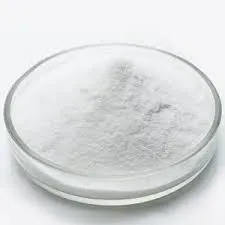
Dec . 15, 2024 16:35 Back to list
Understanding the Composition of HPMC and Its Ingredients
What is HPMC Made From?
Hydroxypropyl Methylcellulose (HPMC) is a versatile and widely used polymer derived from cellulose, a natural biopolymer sourced from plant cell walls. HPMC is synthesized through the modification of cellulose fibers, which are typically extracted from wood pulp, cotton, or other plant materials rich in cellulose. To understand what HPMC is made from, one must delve into the composition of cellulose and the chemical processes involved in transforming it into HPMC.
The Foundation Cellulose
Cellulose is a linear polysaccharide composed of β-D-glucose units linked together by β(1→4) glycosidic bonds. This structure gives cellulose its rigidity and strength, making it a crucial component of plant cell walls. In nature, cellulose exists in a crystalline form, which is insoluble in water and resistant to many chemical solvents. However, for various industrial applications, cellulose must be modified to enhance its solubility and functionality.
The Chemical Modification Process
The production of HPMC involves several chemical modifications of cellulose. The first step typically involves the alkalization of cellulose fibers, which entails treating the cellulose with an alkaline solution, usually sodium hydroxide (NaOH). This process alters the cellulose structure, making it more susceptible to reactions with other chemicals.
Following alkalization, the cellulose undergoes a reaction with propylene oxide and methyl chloride. This step introduces hydroxypropyl and methyl groups into the cellulose molecules. The degree of substitution, which determines how many hydroxyl groups are replaced with hydroxypropyl and methyl groups, is carefully controlled to tailor the properties of the resultant HPMC.
- Methylation The addition of methyl groups increases the hydrophobic character of HPMC, enhancing its ability to form films and retain moisture. - Hydroxypropylation The incorporation of hydroxypropyl groups improves the solubility of HPMC in water, allowing it to dissolve at a wide range of temperatures.
Through these modifications, HPMC retains some of the natural characteristics of cellulose while gaining new functionalities. The resulting compound is a white powder that can easily dissolve in cold or hot water, forming a clear gel or viscous solution.
what is hpmc made from

Properties and Applications
The unique structure of HPMC gives it several advantageous properties, which contribute to its extensive applications across various industries
1. Thickening Agent HPMC is widely used as a thickener in food products, cosmetics, and pharmaceuticals. Its ability to enhance the viscosity of solutions makes it valuable for controlling the texture and mouthfeel of foods.
2. Film-Forming Agent In the pharmaceutical industry, HPMC is used as a film-forming agent in tablets and coatings. It helps enhance the appearance and stability of medications while controlling the release rate of active ingredients.
3. Water Retention In construction, HPMC is incorporated into mortars and plasters to improve water retention and workability. It helps in maintaining moisture levels, which is crucial for effective curing and setting.
4. Stabilizer HPMC serves as a stabilizer in emulsions and suspensions. Its thickening properties help prevent the separation of oil and water phases in products like creams and lotions.
Conclusion
Hydroxypropyl Methylcellulose (HPMC) is a cellulose-derived polymer that has become indispensable in various industries due to its unique properties and functional versatility. Made from natural cellulose through a series of chemical modifications, HPMC serves as a thickening agent, film former, and stabilizer in food, pharmaceuticals, and construction materials. Its ability to combine the advantages of natural cellulose with enhanced solubility and functionality makes HPMC a valuable ingredient in many formulations. Understanding what HPMC is made from helps appreciate its significance and role in modern applications, exemplifying how natural compounds can be transformed to create functional materials that meet diverse needs.
-
Versatile Hpmc Uses in Different Industries
NewsJun.19,2025
-
Redispersible Powder's Role in Enhancing Durability of Construction Products
NewsJun.19,2025
-
Hydroxyethyl Cellulose Applications Driving Green Industrial Processes
NewsJun.19,2025
-
Exploring Different Redispersible Polymer Powder
NewsJun.19,2025
-
Choosing the Right Mortar Bonding Agent
NewsJun.19,2025
-
Applications and Significance of China Hpmc in Modern Industries
NewsJun.19,2025







